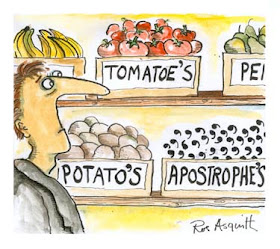5 Reasons why you should always proofread your texts.
- trindadeclaudia3

- Jul 22, 2022
- 3 min read
Updated: Jan 10, 2023
1. Nobody likes typos
Have you ever read a text and come across a typo or a sentence that did not make sense? It is distracting, looks unprofessional, and most people lose respect for the author. Ask yourself, would you continue to read a text that has typos?
I'll give you an example. Last year, I came across a lovely book by a self-published author. The kids were excited, as they love getting new books, but as soon as I started reading, I noticed multiple errors. Even though the story was lovely, the execution was sloppy. Thus I will not buy any books from this author in the future.
2. Unprofessional
I did mention this briefly. Do you know why it appears unprofessional when you come across a text that has not been proofread? It shows that the author has not done his due diligence.
We all make mistakes, especially when we're on a roll and the words just keep coming. The trick is to make sure that you check your work properly before you publish it so that you don't make any noticeable mistakes. A spelling or grammatical error can have huge consequences – you can lose out on repeat customers and potentially cost your business thousands of pounds because you misplaced a comma or accidentally added a zero. Oops! Just have a look at the 'dessert island' image below. The spelling and grammar of this sentence are correct, so your computer will not flag any errors. No matter how amazing computers are, they are not able to understand the context.
3. Grammar mistakes can be difficult to spot
When people interact, they use different tenses (past, present and future) to get their message across. During that face-t0-face or phone conversation, our brains need to work hard to come up with the correct sentence, and our grammar gets all muddled up. People frequently interrupt others during a conversation, and topics change from one second to the other. This interchanging of tenses also happens when we write, and because we are so used to interacting this way, we don't spot these mistakes.
It is natural to mix tenses. When you write, stick to one tense to make the text consistent. Consistency is key. Oh, and whilst "you was doing great" may work in the workplace when you are chatting to your colleagues, it is not suitable for publishing. So keep an eye on that grammar.
4. Layout is easily overlooked
Do you regularly check the style of your headings and bullet points? Most people don't, but they are likely to have some errors. Sometimes a heading or title is not made bold when it ought to be. Often you'll find that bullet points are connected, but some writers decide to leave a gap in between. Whatever you choose, double-check and make sure that it is consistent.
As I was proofreading an already-edited text, I still found some errors. The author did not think there were any mistakes in the text, but he wanted to make sure before he published his text. One of the errors was an overlooked bullet point. All the bullet points in the text had extra spacing, and one did not. It's easy to miss, so keep an eye out for formatting!
5. Inconsistencies
Did you know that there are multiple ways of writing certain words? You can write 'water sports' or 'watersports' as both are correct. The same goes for 'can't', 'can not' and 'cannot'. When we write, we tend not to think about which spelling we have used. We can use water sports in the first paragraph and watersports in the second and not think twice about it. It is important to keep word choice consistent. So if you choose watersports, stick with it. Oh, and the same goes for hyphenated words!
(If you want to learn more about when to use the hyphen, en dash or em dash, check out this other blog post.)
Get your work checked by a professional if you can.
If you don't have the budget to hire a proofreader to do the work for you, remember that inbuilt spell- and grammar checks are great tools. After the computer checks, you should re-read the whole document to ensure you haven't missed any errors. If possible, find a friend or colleague to read the text because it is easy to miss something.










コメント